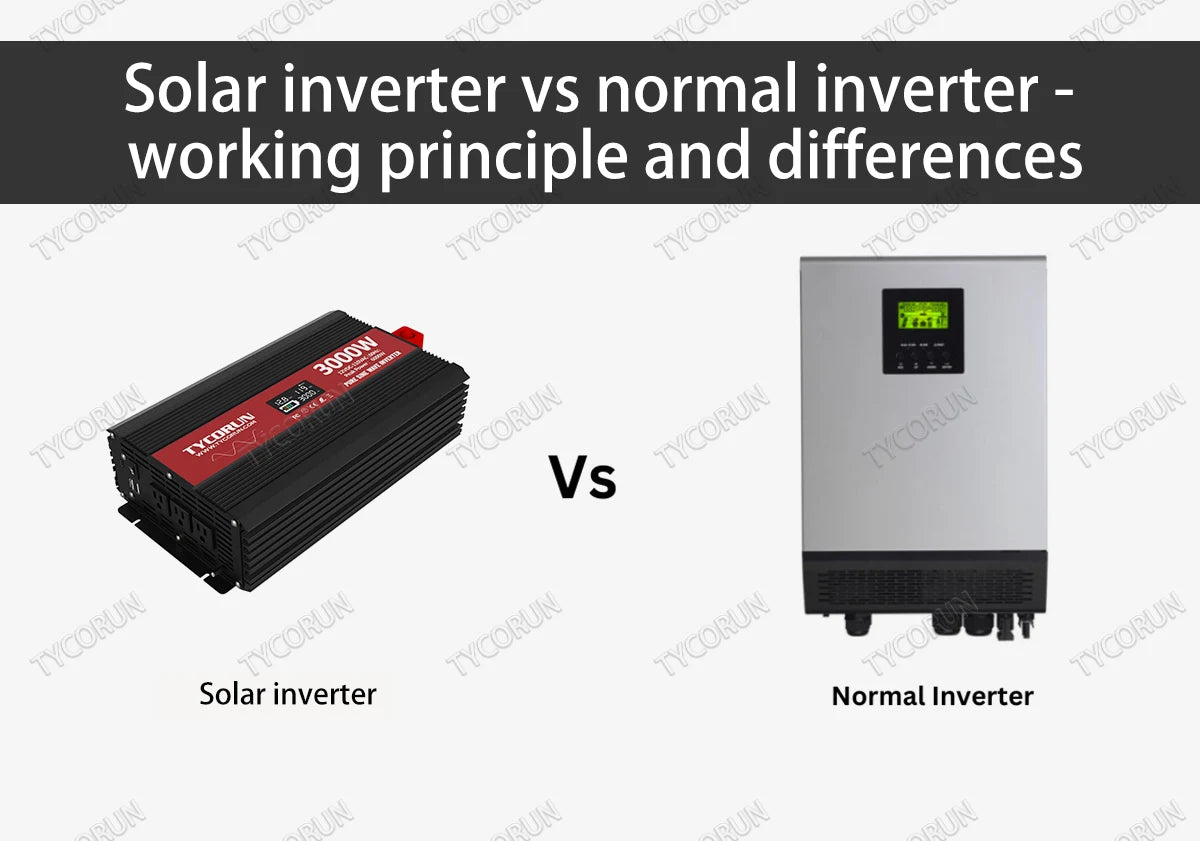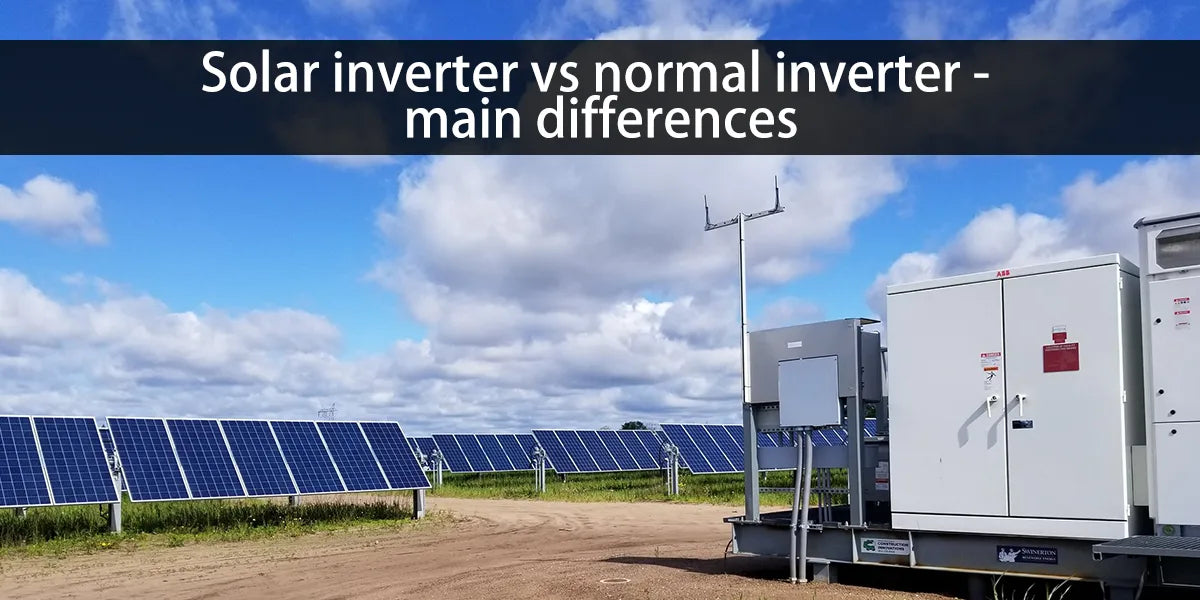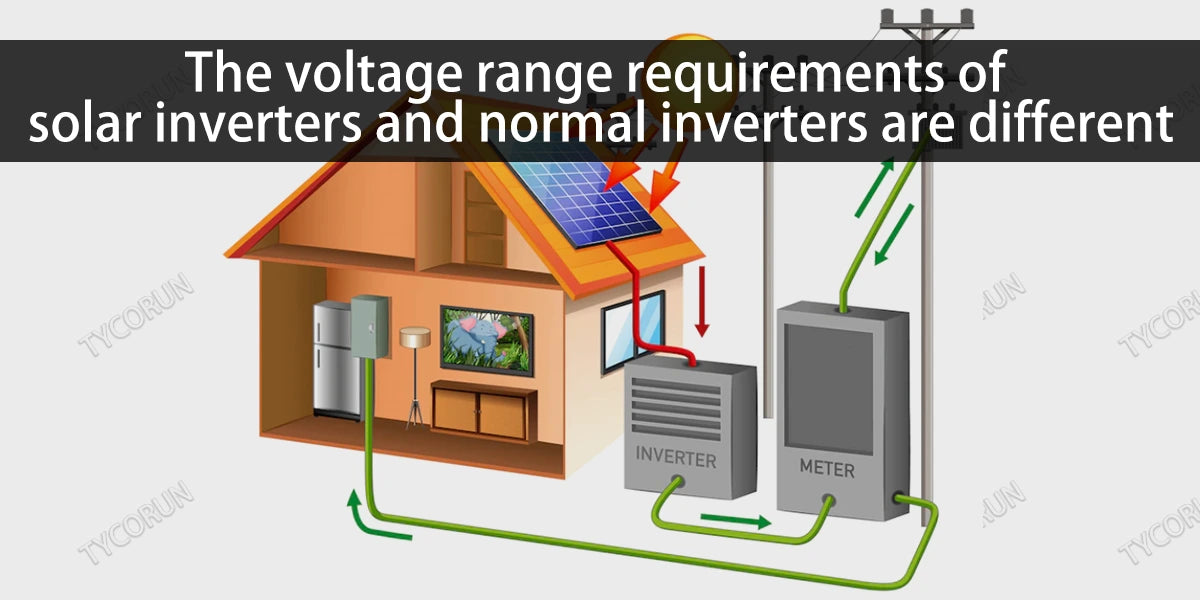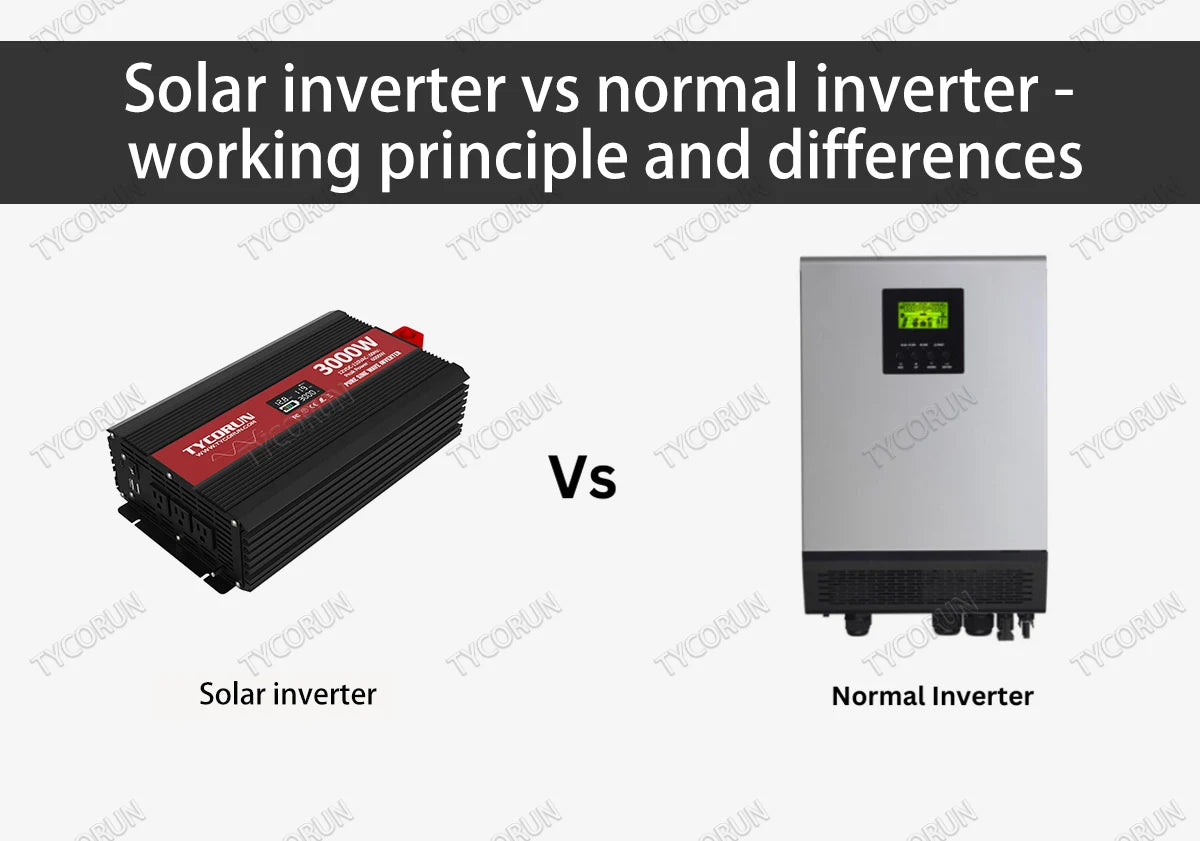
Due to the increasingly bad ecological environment, solar energy, as a green energy, has been widely used in countries around the world. Moreover, due to the flexibility of solar power supply, it has gained popularity in remote areas and mountainous areas. Among the many solar powered equipment, solar inverter is currently an indispensable and important equipment. An inverter is a solar inverter is a special inverter designed for photovoltaic power generation systems, and it converts direct current into alternating current and has a wide range of applications.
The core of photovoltaic power generation is to use photovoltaic modules (often referred to as solar panels) to convert solar energy into electrical energy. However, since photovoltaic modules can only generate direct current, and the size is related to the intensity of sunlight, it is difficult to use it directly. Therefore, this direct current needs to be converted into the usable alternating current. It is converted into our commonly used electricity through a solar inverter to facilitate the transmission and utilization of electricity.
Since the function of a solar inverter is to convert DC power into AC power, can an normal inverter be used instead? The answer is no. There are obvious differences between solar inverter vs normal inverter in terms of working principle of inverter, application, performance, structural design, etc. This article will introduce and compare solar inverter vs normal inverter in detail so that you can better understand their differences and characteristics.
Main content:
Solar inverter vs normal inverter - working principle
① Working principle of solar inverter
Solar inverter is a device that converts DC power into AC power. Its main function is to convert DC power generated in the solar power generation system into AC power for use in the power supply network. The working principle of a solar inverter is to convert and boost the DC power generated by solar panels (PV) through electronic components, and finally output it to the power grid. During the working process, the inverter converts unstable DC power into stable AC power and outputs it according to a specific frequency, voltage and phase.
The core component of the solar inverter is the integrated circuit chip (IC), which contains key components such as control logic, analog circuits and power semiconductor switches. The solar inverter is also equipped with AC output filter circuit, DC protection circuit, temperature and current detection circuit, etc. The combined effect of these components enables the solar inverter to adapt to DC interface voltage changes and provide high-quality access to the grid.

Comparing solar inverter vs normal inverter, solar inverter has some very important characteristics. For example, it enables remote monitoring and fault diagnosis. The device also features MPPT and grid protection. In addition, solar inverters are able to coordinate between TV receivers, computers and other electrical equipment for rational use of the power generated by solar panels.
② Working principle of normal inverter
When compare solar inverter vs normal inverter, normal inverters are also devices that convert direct current into alternating current. They have a wide range of applications and can be used in industry, homes, transportation and so on. The working principle of an normal inverter is similar to that of a solar inverter, except that its input power source is different. The input power source of an normal inverter can be a DC LFP battery, a storage battery, etc., and is not limited to solar panels.
The output voltage and frequency of normal inverters can be adjusted within a certain range to meet the different needs of a variety of equipment. In addition, normal inverters also have overload protection, short circuit protection, overvoltage protection, undervoltage protection, etc., which can comprehensively protect the inverter system.

Solar inverter vs normal inverter - main differences
① Different working principles: Like what we compared above about the working principle of solar inverter vs normal inverter, the input power of the solar inverter is the DC current generated by the solar panel, while the input power of the normal inverter can be a variety of DC power sources. Solar inverters can also monitor solar panel output current and voltage to determine output power.
② Different input power sources: The input power source of the solar inverter comes directly from the solar panel, while the input power source of the normal inverter can be a variety of DC power sources.
③ The number of input terminals: In order to adapt to the input needs of multiple photovoltaic modules, solar inverters with relatively large power generally have more than 6 DC input terminals, while normal inverters do not need so many input terminals.
④ Different output voltages and frequencies: The output voltage and frequency of the solar inverter are fixed, generally 220V, 50Hz. Normal inverters can be adjusted as needed to meet the electrical needs of different devices.
⑤ Different power output: The power output of solar inverters is usually low, generally no more than a few hundred watts, while normal inverters can output several thousand watts of power.
⑥ Different scope of application: The scope of application of solar inverters is relatively narrow and is mainly used in home solar power system or solar power generation plants, while the scope of application of normal inverters is wider and can be used in various occasions such as industry and homes.
⑦ Different performance indicators: Solar inverters have higher conversion efficiency and lower power consumption than normal inverters, which can maximize the utilization efficiency of the solar power generation system.
⑧ Different structural designs: Solar inverters are often lighter and more compact than normal inverters, and have better air tightness, waterproof and dustproof performance, and can be placed in outdoor environments for use.

⑨ Different voltage range requirements: Since the output voltage and power of solar modules are greatly affected by light, and the voltage fluctuates, the solar inverter must adapt to a very wide voltage range, such as 3000w inverter ~ 5000w inverter, the range of DC input voltage is 120-500V, and the maximum DC voltage range of a general inverter will not exceed +_25%. Solar inverters have stricter requirements on the voltage range and usually need to be adjusted through maximum power point tracking (MPPT) technology, while normal inverters have a larger voltage adaptation range.
⑩ Different environmental adaptability: Solar inverters usually operate in outdoor environments and need to have better inverter protection such as waterproof, dustproof, lightning protection, sun protection and so on. While normal inverters are usually used in indoor environments.
⑪ Different protection measures: Solar inverters require more control terminals and protection measures to cope with the instability of the DC power supply of solar panels, while normal inverters have relatively few protection measures.
⑫ Different circuit topologies: Solar inverters usually use single-phase bridge circuit topology, while normal inverters use bidirectional switching topology.
Conclusion
With the development of new energy sources such as solar power generation, solar inverters have become an indispensable equipment in solar power generation systems. Compared with normal inverters, solar inverters are more specialized. They are designed for solar power generation systems and have higher conversion efficiency, more precise power coordination and excellent anti-interference performance. While normal inverters are suitable for a variety of DC power supplies and are more versatile.
In short, for consumers, the decision between solar inverter vs normal inverter depends on your own needs and specific application scenarios. The selection and purchase should be based on the actual conditions such as the requirements of the power grid, the output power of the solar panels, the output voltage and frequency of the inverter, etc.
Related posts: global top 10 best solar inverter brands, top 10 solar inverters in Australia, top 5 solar companies in Egypt















